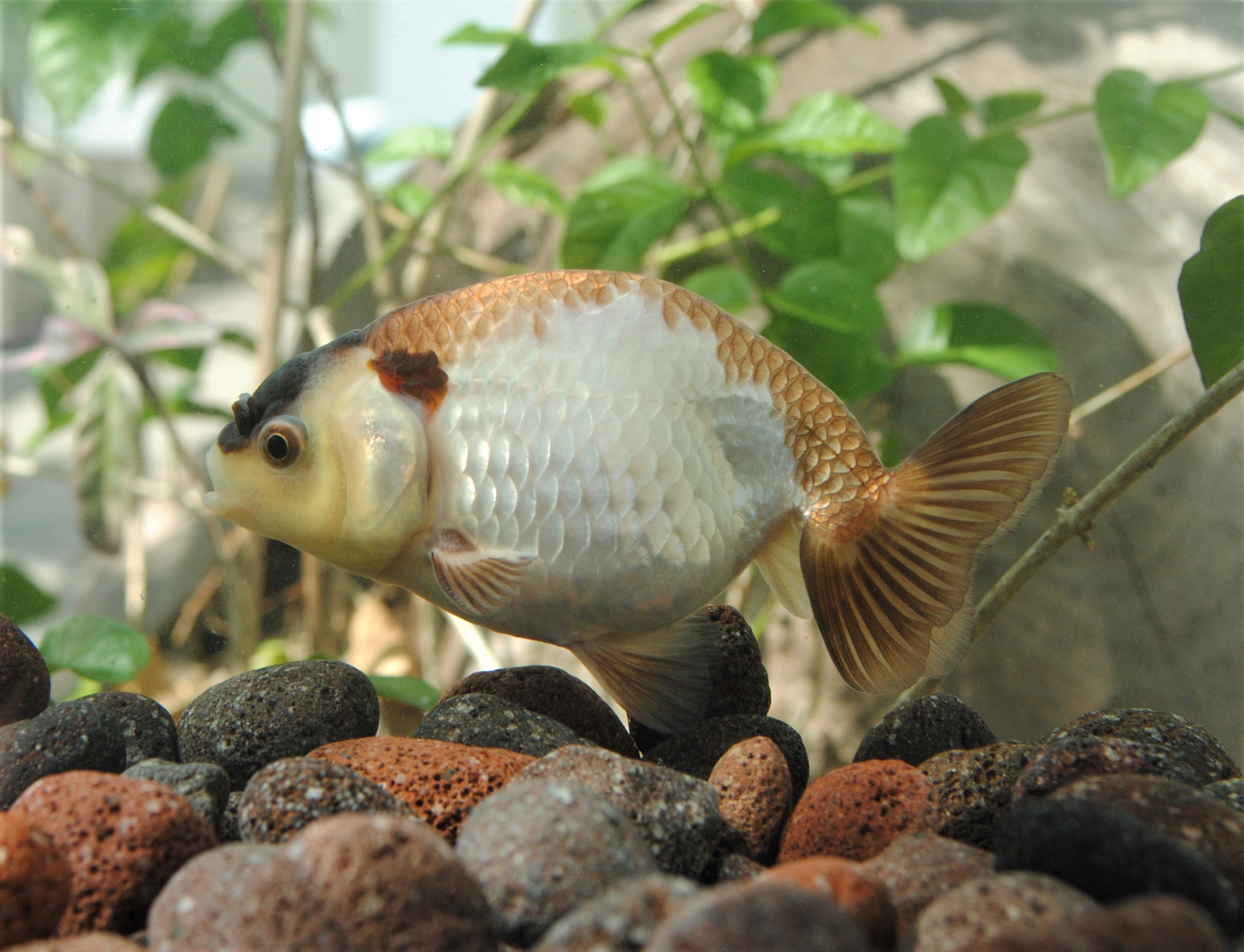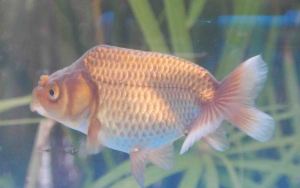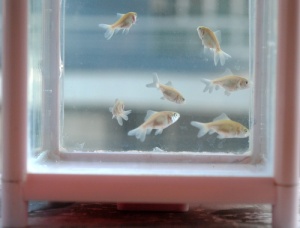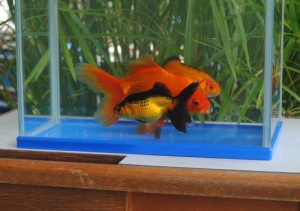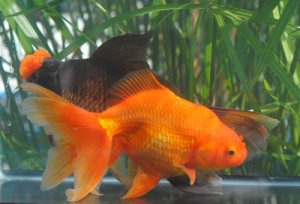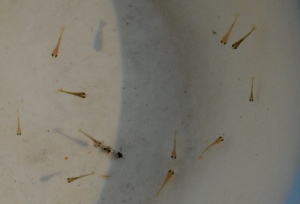Project #9,10,11: Blue, Brown, and Purple Ranchu Update
The fish I mentioned in the diary #6 show promising results. The cross produces four colors at once: grey, brown, purple and blue. I do not post the grey here. I will focus on the brown, purple, and blue. These are the champions after the final cull.
Brown Ranchu:

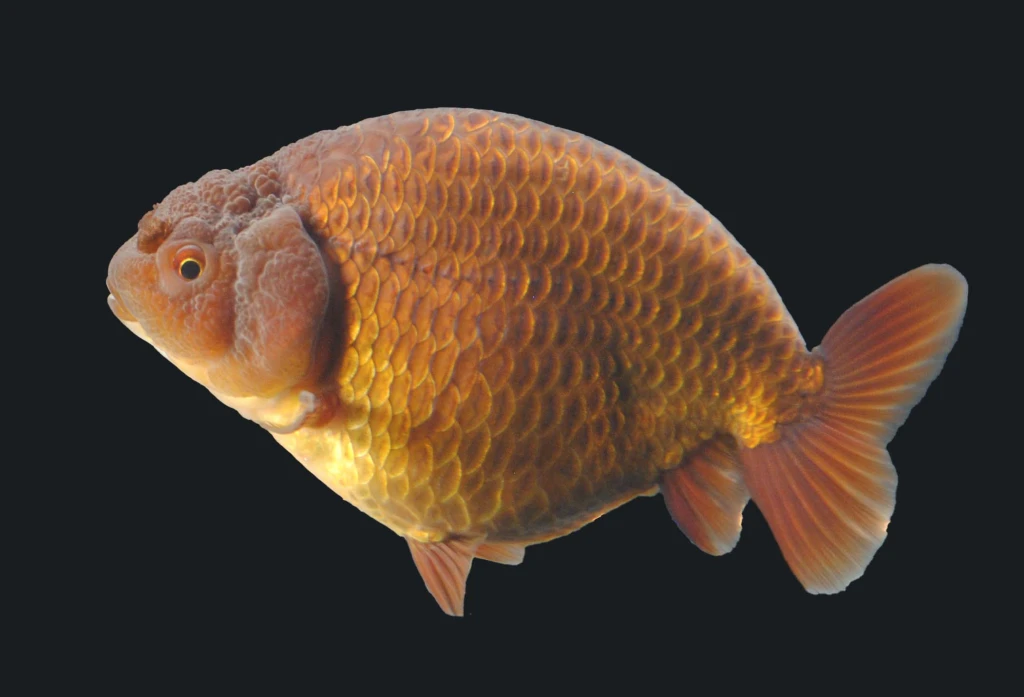


I am satisfied with these two brown ranchu, especially the first one. She shows beautiful smooth and thick curve. She can grow into a large and beautiful fish. Yes, she has weak headgrowth, and the size of the head is a bit small compared to the body. I plan to improve it by crossing with red-white ranchu that has better characteristic on this area. I think I will have beautiful offspring from this crossing next year.
The second fish is also female. So I do not have a male brown ranchu right now. The second fish is cute. She has a better headgrowth with more proportional head and body ratio. Well, actually I do not mind which one will be the next mother for my brown ranchu project. Both are adorable in their own ways.
Purple:


Well, this is the only purple that can survive the cull. And the quality is far below expectation. The head is totally bald. The peduncle is long and slim / thin. Those are two characteristics I would like to avoid. But he is the only one I have. So, my future purple ranchu lineage might depend on him. The color is attractive, though.
Blue:




The pictures were taken under afternoon sunlight. So the blue color looks a bit like purple due to the excessive sunlight. The first fish is female. I am not sure about the second one. The headgrowth is unique. The first has a little headgrowth, while the second one is bald. The curve of the first one is almost flat in the upper back, and sharply curves down before the tail. The second one has highest point of the back curve a bit to the front, which then slopes down not in a sharp manner. The color of the second fish is rich in gold combination.
I will certainly consider these blue to be my next parent fish. But I also have with me a different line of blue ranchu with a totally different character. I will compare them to decide what to do when they are ready to breed.
As a conclusion, I think my prize in this project is the brown ranchu.






